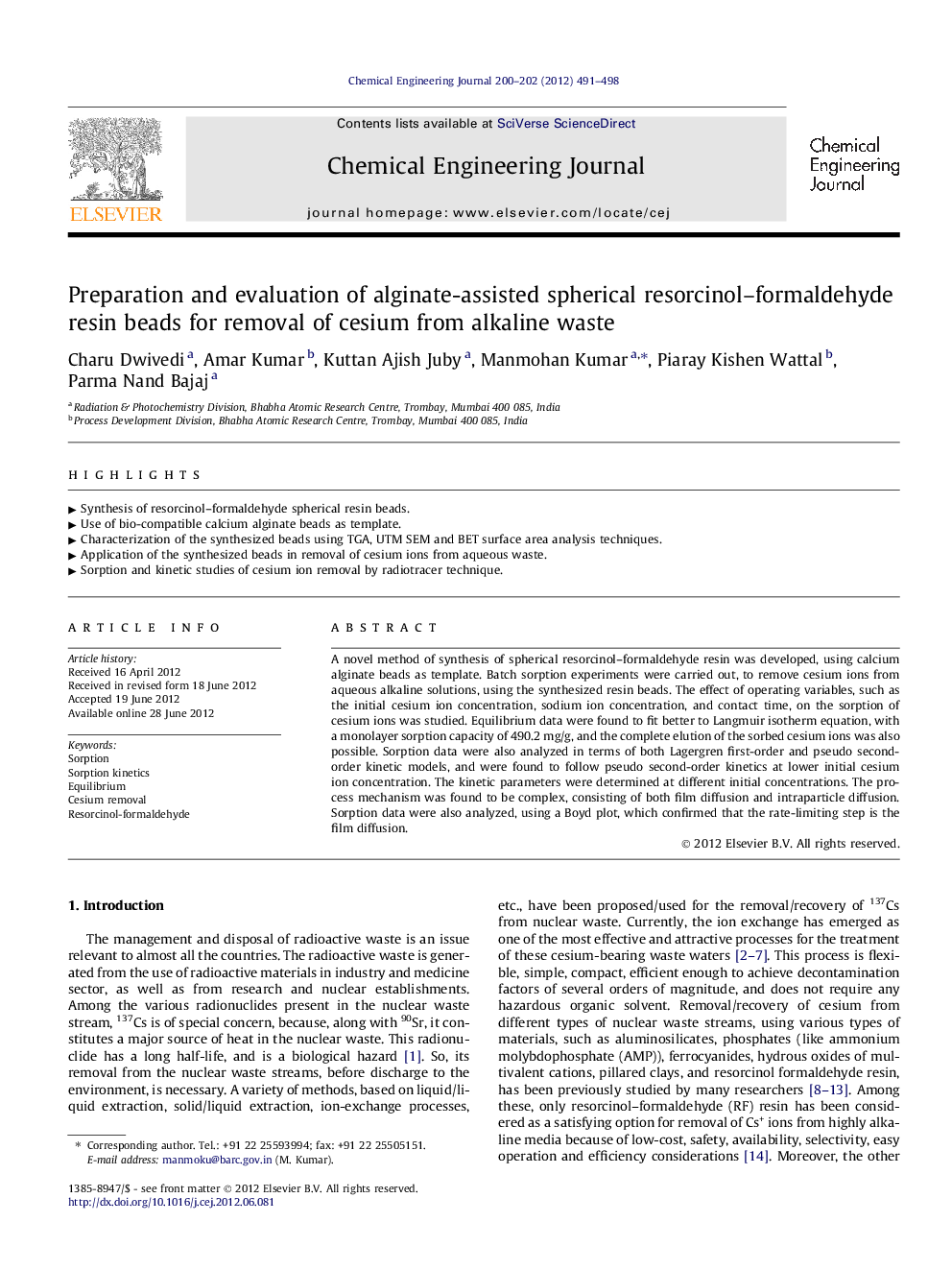| Article ID | Journal | Published Year | Pages | File Type |
|---|---|---|---|---|
| 149571 | Chemical Engineering Journal | 2012 | 8 Pages |
A novel method of synthesis of spherical resorcinol–formaldehyde resin was developed, using calcium alginate beads as template. Batch sorption experiments were carried out, to remove cesium ions from aqueous alkaline solutions, using the synthesized resin beads. The effect of operating variables, such as the initial cesium ion concentration, sodium ion concentration, and contact time, on the sorption of cesium ions was studied. Equilibrium data were found to fit better to Langmuir isotherm equation, with a monolayer sorption capacity of 490.2 mg/g, and the complete elution of the sorbed cesium ions was also possible. Sorption data were also analyzed in terms of both Lagergren first-order and pseudo second-order kinetic models, and were found to follow pseudo second-order kinetics at lower initial cesium ion concentration. The kinetic parameters were determined at different initial concentrations. The process mechanism was found to be complex, consisting of both film diffusion and intraparticle diffusion. Sorption data were also analyzed, using a Boyd plot, which confirmed that the rate-limiting step is the film diffusion.
► Synthesis of resorcinol–formaldehyde spherical resin beads. ► Use of bio-compatible calcium alginate beads as template. ► Characterization of the synthesized beads using TGA, UTM SEM and BET surface area analysis techniques. ► Application of the synthesized beads in removal of cesium ions from aqueous waste. ► Sorption and kinetic studies of cesium ion removal by radiotracer technique.
